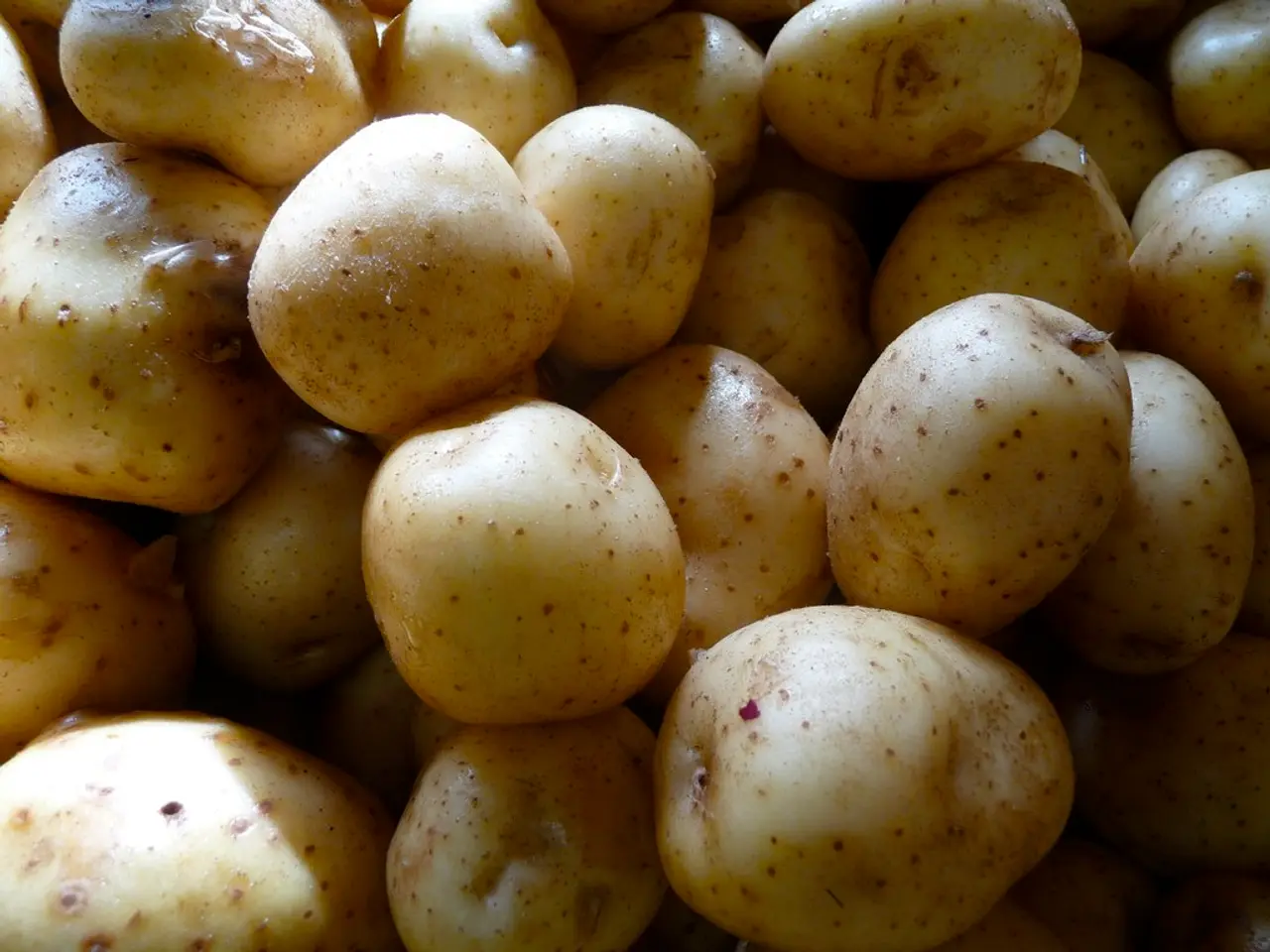Surgical extraction, bacterial infections, and medicinal interventions for sebaceous cysts management
Epidermoid cysts, common benign growths under the skin, can be treated using various methods. These growths, also known as epidermal cysts, keratin cysts, or epithelial cysts, are moveable, fluid-filled bumps that can range in size from a few millimeters to 5 centimeters across. While they are generally harmless, they can cause discomfort if they become inflamed, infected, or interfere with everyday activities.
Several treatment options are available, with surgical procedures being the most effective. The methods include incision and drainage (I&D), surgical excision, punch excision, and minimally invasive approaches such as laser therapy or negative pressure wound therapy.
1. **Incision and Drainage (I&D):** This method is often used for inflamed cysts. It involves making a small incision to drain the cyst's contents, but it doesn't remove the cyst wall, which may lead to recurrence.
2. **Surgical Excision:** This is the definitive treatment for epidermoid cysts. It involves removing the cyst entirely, including its wall, under local anesthesia. This method is effective for preventing recurrence but may leave a scar.
3. **Punch Excision:** For smaller cysts, punch excision can be used. This method involves removing the cyst with a small punch tool, resulting in a smaller scar compared to traditional excision.
4. **Minimally Invasive Approaches:** Techniques like laser therapy or negative pressure wound therapy can be used depending on the cyst's size and location. These methods often result in less scarring and faster recovery.
However, removing epidermoid cysts, like any surgical procedure, carries potential risks and complications. These include infection, scarring, pain and discomfort, recurrence, and adverse reactions to anesthesia. If a cyst has burst or there is an infection under the skin, the doctor may need to lance and drain it and may prescribe a course of antibiotics.
It is crucial to avoid treating skin cysts at home, as this can worsen the condition and cause infections. If a person suspects an infection, they should see a doctor. An infected cyst may look red due to inflammation and have a whitish appearance due to the presence of pus.
In the meantime, to manage an infected cyst, a person can apply a warm compress, keep it clean by washing it regularly with a mild antimicrobial soap, and avoid covering it with cosmetic products. It is essential to remember that there is no research to confirm the effectiveness of home remedies like tea tree oil, apple cider vinegar, and aloe vera for treating skin cysts.
Doctors can accurately diagnose and treat skin cysts, avoiding making them worse. A doctor may suggest removal of a cyst if it is causing discomfort, such as due to infection, interfering with everyday activities, or being in a prominent location. A fixed lump that does not move could indicate a complication, and a person should see a doctor.
In conclusion, while epidermoid cysts are common and generally harmless, they can cause discomfort and interfere with daily life. Proper treatment, usually involving surgical procedures, can help manage and even remove these growths effectively. It is essential to consult a doctor for any concerns about cysts and to avoid treating them at home, as this can lead to complications and infections.
- Certain medical conditions, such as diabetes, COPD, and asthma, might require special precautions before undergoing surgical procedures to remove epidermoid cysts.
- In the realm of predictive science, studying the pattern and progression of skin conditions like psoriasis, atopic dermatitis, and eczema might provide insights into the development and response to treatment of epidermoid cysts.
- When discussing health and wellness, maintaining good skin care is crucial, especially for those prone to skin conditions like acne or rosacea, as they might be more prone to developing epidermoid cysts.
- AQ (aqua), a key component in many skin care products, is beneficial for maintaining skin hydration, which is vital for overall skin health, including the health of epidermoid cysts.
- In the realm of medical science, researchers are continually studying various medical-conditions and their relationship to epidermoid cysts, with the aim of discovering new treatment methods and potential causes.
- For those with sensitive skin or existing skin conditions, it's essential to choose tier 1 medical-grade skin-care products to minimize the risk of irritation or adverse reactions that could lead to cyst formation.
- Proper knowledge of one's skin condition and its possible causes, such as genetics or environmental factors, is essential in understanding the potential development and management of epidermoid cysts.




